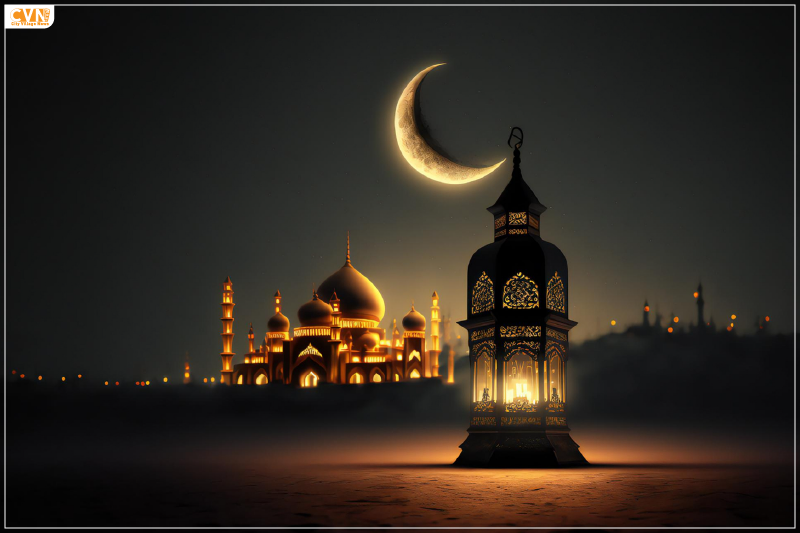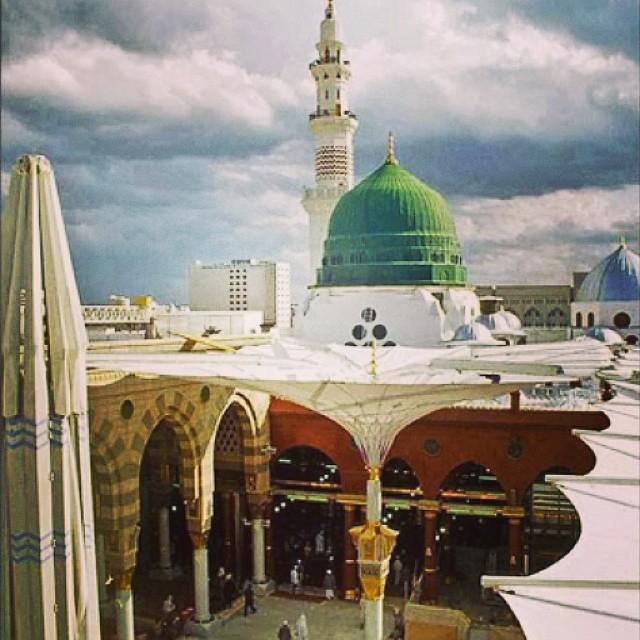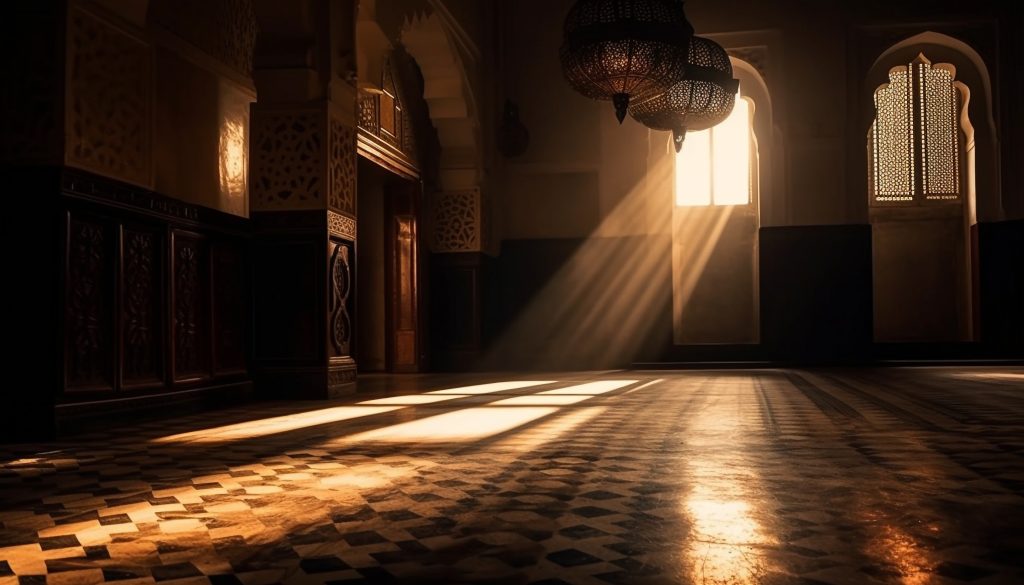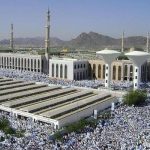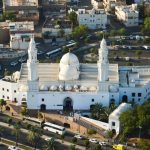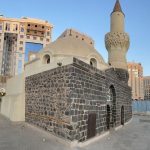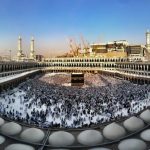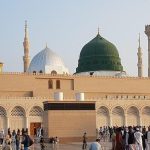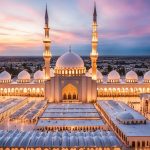Introduction: Embracing the Spirit of Eid al-Fitr with Umrah International
At Umrah International, we recognize the profound significance of Eid al-Fitr, a cherished festival that marks the conclusion of Ramadan. This guide aims to provide a comprehensive understanding of Eid al-Fitr, celebrating its spiritual depth, cultural richness, and the unique traditions that unite Muslims around the globe. Our mission is to ensure that your observance of this joyous occasion is both fulfilling and memorable.
1. The Essence of Eid al-Fitr: Understanding Its Significance
Defining Eid al-Fitr: A Celebration of Renewal
Eid al-Fitr, known as the “Festival of Breaking the Fast,” holds immense significance in Islam. It symbolizes the culmination of Ramadan, a month devoted to self-discipline, prayer, and reflection. The festival is a joyous occasion where Muslims express gratitude for the strength they have demonstrated throughout the month of fasting, making it a moment of spiritual renewal.
Historical Roots: The Legacy of the Prophet Muhammad
Eid al-Fitr has its origins in the teachings of the Prophet Muhammad, who established the festival to commemorate the end of Ramadan. The celebration emphasizes gratitude, community, and the shared experience of breaking the fast together, reinforcing the values of compassion and unity within the Muslim Ummah.
2. The Spiritual Journey: Reflections on Ramadan
Ramadan: A Month of Spiritual Growth
During Ramadan, Muslims engage in fasting, prayer, and self-reflection. The month serves as a time for introspection, allowing believers to deepen their connection with Allah. The lessons learned during Ramadan set the stage for the celebration of Eid al-Fitr, making it a significant spiritual milestone.
The Importance of Gratitude and Charity
Eid al-Fitr embodies gratitude not only for personal blessings but also for the opportunity to assist those in need. The practice of Zakat al-Fitr, a form of obligatory charity given before the Eid prayer, reinforces the importance of giving back and ensures that everyone can partake in the festivities, regardless of their financial situation.
3. The Rituals of Eid al-Fitr: Customs and Practices
Preparing for Eid: Spiritual and Practical Readiness
In anticipation of Eid al-Fitr, Muslims engage in spiritual preparation, which includes prayer, reflection, and the act of giving. On the eve of Eid, many individuals clean their homes and prepare new clothes to honor the occasion, symbolizing a fresh start and the joy of community.
The Eid Prayer: A Communal Experience
On the morning of Eid, Muslims gather in mosques or open spaces for a special congregational prayer. This prayer serves as a reminder of the importance of community and unity, and it is accompanied by a sermon that emphasizes the values of compassion and forgiveness.
4. The Festivities of Eid al-Fitr: Joyful Celebrations
The Celebration Begins: A Time for Family and Friends
Eid al-Fitr festivities typically last for three days, filled with joyful activities that strengthen family ties. Muslims often visit friends and family, exchange gifts, and enjoy elaborate meals together, reinforcing the bonds of love and community.
Traditional Greetings: Sharing the Joy
During Eid, it is customary to greet one another with phrases such as “Eid Mubarak,” meaning “Blessed Eid.” This exchange fosters a sense of goodwill and celebration among friends and family, embodying the spirit of unity that defines the holiday.
5. Culinary Traditions: A Feast of Diversity
Breaking the Fast: Symbolic Foods
One of the highlights of Eid al-Fitr is the festive feast that follows the morning prayers. The meal often begins with the consumption of dates, which signifies the end of the fast and represents gratitude for sustenance.
Popular Dishes from Various Cultures
Eid al-Fitr meals are characterized by their diversity, with each culture bringing unique flavors and dishes to the table. Some beloved dishes include:
- Sheer Khurma: A sweet vermicelli pudding often served at breakfast.
- Biryani: A flavorful rice dish made with spiced meat, commonly enjoyed during celebrations.
- Samosas: Crispy pastries filled with various ingredients, perfect as appetizers.
- Baklava: A sweet pastry made of layers of filo dough, filled with nuts and honey, popular in many regions.
These culinary traditions reflect the rich cultural tapestry of the Muslim world and highlight the joy of sharing meals with loved ones.
6. The Global Nature of Eid al-Fitr: A Worldwide Celebration
Regional Variations: Unique Customs Around the World
Eid al-Fitr is celebrated with distinct customs and traditions in different parts of the world. In Indonesia, vibrant community feasts fill the streets, while in Turkey, people may perform traditional dances and music. Each celebration adds to the rich diversity of the festival, showcasing the myriad ways in which joy can be expressed.
Community Engagement: The Heart of the Celebration
In many communities, Eid al-Fitr is marked by large gatherings organized by local mosques or community centers. These events often include food stalls, entertainment, and activities for children, creating a festive atmosphere that emphasizes togetherness and communal joy.
7. Understanding the Islamic Calendar: The Significance of Lunar Timing
The Lunar Calendar: A Unique Framework
Eid al-Fitr is celebrated on the first day of Shawwal, the month following Ramadan in the Islamic lunar calendar. This calendar, which is based on the phases of the moon, causes Islamic holidays to shift approximately 11 days earlier each year in the Gregorian calendar, allowing Muslims to experience Eid in different seasons throughout their lives.
The Role of the Crescent Moon in Eid Celebrations
The sighting of the crescent moon is an important tradition that signifies the beginning of Shawwal and the celebration of Eid al-Fitr. This lunar observation is not just a matter of tradition; it adds an element of anticipation and excitement to the holiday.
8. Distinguishing Eid al-Fitr from Eid al-Adha: Understanding Their Unique Significance
The Duality of Eid Celebrations
Eid al-Fitr and Eid al-Adha are the two major Islamic holidays, each with its own significance. While Eid al-Fitr celebrates the end of Ramadan and the joy of breaking the fast, Eid al-Adha, known as the “Festival of Sacrifice,” honors the willingness of Ibrahim (Abraham) to sacrifice his son in obedience to Allah.
Shared Themes: Community and Charity
Both Eids highlight the themes of community, generosity, and compassion. Special prayers, feasting, and acts of charity are common to both celebrations, reinforcing the core values of Islam.
9. Preparing for a Joyous Eid: Practical Tips and Insights
Spiritual Preparation: Engaging in Reflection
As Eid al-Fitr approaches, believers are encouraged to engage in personal reflection and prayer. This spiritual readiness enhances the overall experience of the holiday, allowing for deeper connections with faith and community.
Practical Arrangements: Ensuring a Smooth Celebration
From organizing communal prayers to preparing festive meals, practical preparations are essential for a joyful Eid celebration. Consider planning ahead to fully enjoy the day without stress, ensuring that every moment is cherished.
10. The Role of Women in Eid al-Fitr: Celebrating Empowerment
Women’s Contributions to Eid Traditions
Women play a vital role in the celebration of Eid al-Fitr, often taking the lead in family gatherings, meal preparations, and community involvement. Their contributions not only enhance the festive atmosphere but also reinforce the importance of female empowerment in Islamic culture.
Preserving Cultural Heritage Through Tradition
Women help preserve cultural practices associated with Eid al-Fitr through cooking, crafting, and storytelling. This transmission of customs ensures that the essence of the holiday is passed down through generations, enriching the cultural landscape of the community.
11. The Theme of Forgiveness: A Central Message of Eid al-Fitr
Seeking and Granting Forgiveness
Eid al-Fitr emphasizes the importance of forgiveness and reconciliation. Muslims are encouraged to forgive past grievances, promoting harmony within families and communities. This practice underscores the core values of compassion and empathy within Islam.
Building Stronger Bonds Through Understanding
The act of seeking forgiveness not only fosters personal growth but also strengthens communal ties. By approaching one another with understanding and goodwill, the spirit of Eid is enriched, creating a more cohesive community.
12. Eid al-Fitr Celebrations Around the Globe: A Tapestry of Traditions
Local Customs: A Global Mosaic
Eid al-Fitr is celebrated in diverse ways around the world, with local customs enriching the experience. In many regions, fireworks and public celebrations are commonplace, while others focus on family gatherings and community prayers, reflecting the unique cultural heritage of each area.
The Role of Community Events in Celebrating Eid
Local communities often organize large celebrations, including food fairs, cultural performances, and family-friendly activities. These events not only enhance the festive atmosphere but also foster connections among community members, reinforcing the sense of belonging.
Conclusion:
As you prepare for Eid al-Fitr, Umrah International is dedicated to supporting your spiritual journey and enriching your experience during this significant festival. Whether you are seeking travel arrangements to holy sites or resources for celebrating Eid with family and friends, we are here to assist you. Embrace the spirit of gratitude, compassion, and community this Eid, and may your celebrations be filled with joy, blessings, and unity

